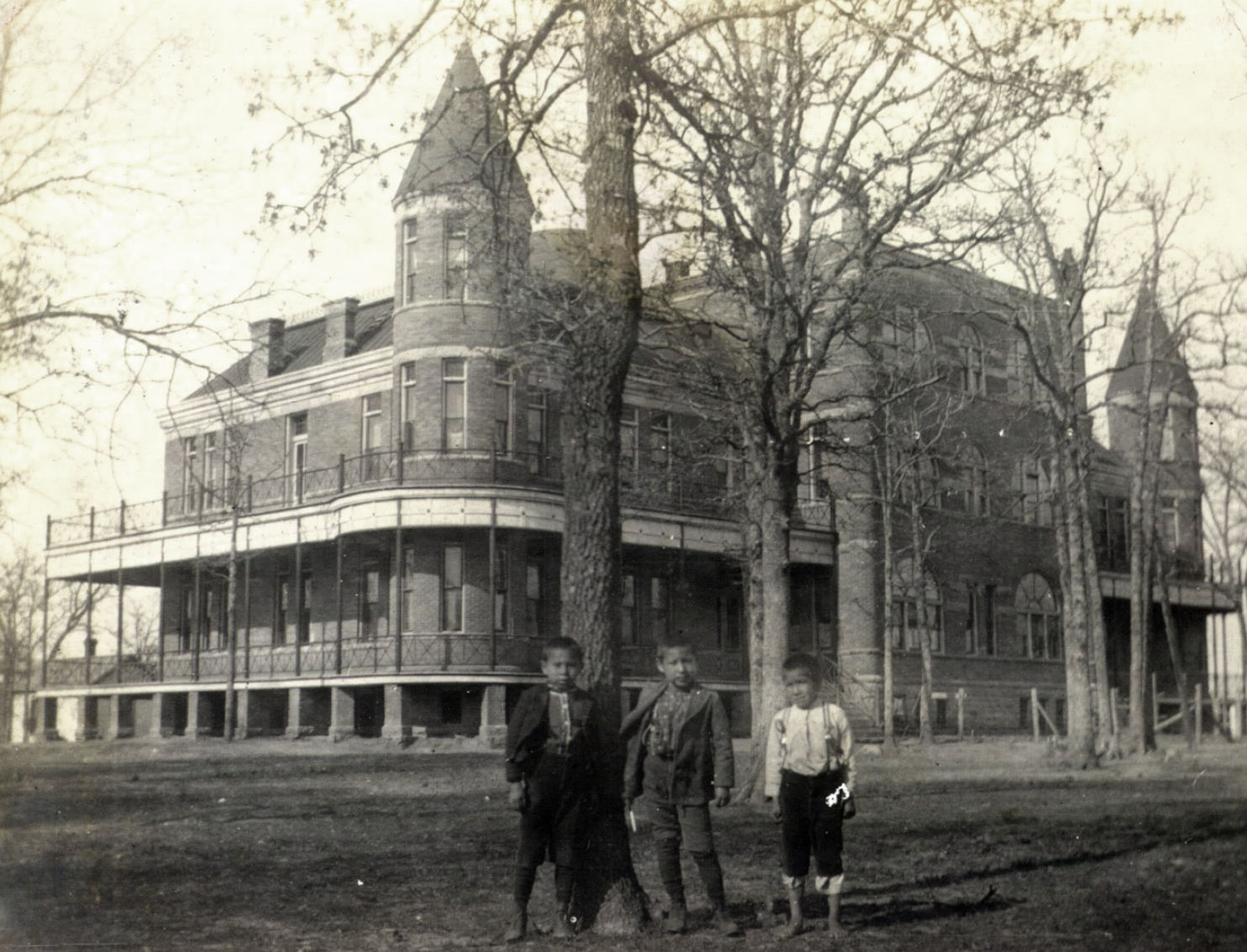The Encyclopedia of Oklahoma History and Culture
SEMINOLE SCHOOLS.
The first Seminole mission school founded in the Indian Territory (present Oklahoma) was Oak Ridge, a manual labor school established in 1848. The Oak Ridge site was approximately three miles southeast of present Holdenville, in the former Creek Nation, where the Seminole dwelled until 1856. The Presbyterian Mission Board built and ran the school. Rev. John Lilley and his wife, Mary Anne, were in charge. The Lilleys were assisted by John Bemo, a Seminole. In 1853 they had twenty-six students, nineteen of whom were Seminole. Creek and Cherokee students paid room and board, but Seminole attended for free. The Lilley's children were also enrolled. Oak Ridge closed in 1855 when the Lilleys returned to the East. They returned and reopened Oak Ridge in 1856 and were assisted by Rev. James Ross Ramsey, who later organized the Wewoka Mission, a boarding school for Seminole girls, just north of Wewoka. Oak Ridge was abandoned and destroyed during the Civil War.
The Methodist Episcopal Church built Sasakwa Female Academy in 1880 near Sasakwa. In 1887 the Seminole took control of the school, and Chief John Jumper hired William Packer Blake as superintendent. In 1892 the institution was moved south of Wewoka and later consolidated with a new girls' boarding school called Emahaka Mission or Academy.
Emahaka Mission was established in 1894. Emahaka, a Seminole word meaning "girls' school," was located five miles south of Wewoka, on the Seminole-Creek Nation border. Full capacity of the school's boarding department was 112. Studies ranged from elementary arithmetic to foreign languages. The four-story, brick building was constructed by the Seminole Nation at a cost of more than fifty thousand dollars. The building had hot and cold running water, steam heat, and fireplaces. To qualify for admission girls had to be between the ages of six and eighteen, and their band chief had to guarantee their "good moral character." The school was combined with Mekasukey Academy in 1911 but burned in 1927.
Emahaka's architectural design duplicated Mekasukey Academy, which had opened in 1891. Mekasukey is a Creek word that originally meant "where the chiefs meet"; a later translation was "the place where Christianity is taught." A school for Seminole and Creek boys (girls were admitted from Emahaka after its closure), Mekasukey was built three miles south and two miles west of present Seminole. The school was an impressive building, with electricity and indoor plumbing. Enrollment averaged eighty-five students, who raised livestock, vegetables, and dairy products. All teachers and staff resided on campus. Instructors spoke only English, and children were not permitted to speak their native language during the nine-month term.
Mekasukey Academy was closed in 1930 and later burned. In 1950 the Oklahoma Historical Society commemorated the institution with a marker on State Highway 59. The Mekasukey Academy site was added to the National Register of Historic Places (NR 74001668) in 1974.
See Also
AMERICAN INDIANS, AMERICAN INDIANS AND CHRISTIANITY, AMERICAN INDIANS AND EDUCATION, CREEK (MVSKOKE), RELIGION, SEMINOLE
Bibliography
Joe C. Jackson, "Church School Education in the Creek Nation," The Chronicles of Oklahoma 46 (Autumn 1968).
Robert E. Trevathan, "School Days at Emahaka Academy," The Chronicles of Oklahoma 38 (Autumn 1960).
Michael Welch, "The Missionary Spirit," The Chronicles of Oklahoma 61 (Spring 1983).
Muriel H. Wright, A Guide to the Indian Tribes of Oklahoma (Norman: University of Oklahoma Press, 1951).
Citation
The following (as per The Chicago Manual of Style, 17th edition) is the preferred citation for articles:
Pamela Koenig, “Seminole Schools,” The Encyclopedia of Oklahoma History and Culture, https://www.okhistory.org/publications/enc/entry?entry=SE013.
Published January 15, 2010
© Oklahoma Historical Society


